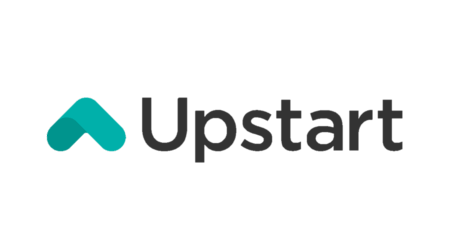Most traditional and alternative lenders offer $20,000 personal loans. Learn more about your options, calculate how much a loan might cost you and read up on typical eligibility requirements.
$20,000 personal loan lenders
Compare lenders that offer $20,000 loans by rates and credit score requirements.
Compare other products
We currently don't have that product, but here are others to consider:
How we picked theseWhat is the Finder Score?
The Finder Score crunches 6+ types of personal loans across 50+ lenders. It takes into account the product's interest rate, fees and features, as well as the type of loan eg investor, variable, fixed rate - this gives you a simple score out of 10.
Eligibility requirements for a $20,000 loan
Each lender has its own special sauce when it comes to evaluating applications. But most consider the following information when deciding what rate, term and loan amount you’re eligible for:
- Credit score. Your credit score is often one of the most important factors in qualifying for a large loan with a competitive rate. You generally have more options if you have good to excellent credit: 670 and up.
- Income and debts. Lenders tend to look at how much you can afford monthly by looking at your debt-to-income (DTI) ratio. Lenders prefer a DTI below 20% though the maximum is 43% with most lenders.
- Steady income. You must show enough monthly income to cover loan payments — and then some. It doesn’t have to be from a full-time job, but it may take longer to process your application if you don’t have a W2.
Can I get a loan for $20,000 with bad credit?
It’s possible to get a $20,000 loan with bad credit — or a credit score below 580. But your options are limited to a few lenders. Even if you qualify, you’ll likely qualify for a rate of around 36% APR. This can lead to high monthly payments and may not be worth the cost.
If you don’t need $20,000 right now and your credit is poor, consider repairing your credit first. It’s a process that doesn’t happen overnight, but it can greatly improve your chances of qualifying and getting a better rate.
How to increase your chances of approval and get lower rates
Personal loans around $20,000 are bound to have some requirements, and there are a few ways to increase your approval odds and tactics to get lower rates.
- Boost your credit score. This is sometimes easier said than done, but there are many ways to improve your credit score. Review your credit reports, check for errors, pay down your credit cards and resolve any issues with existing creditors.
- Calculate your monthly expenses. Depending on your term and loan amount, you’ll likely need around $1,500 to $4,000 available monthly after you pay your bills to qualify for a $20,000 loan. Knowing your budget can help determine how much you need to borrow and how short of a loan you can realistically get.
- Consider a secured loan. Secured loans for situations like purchasing a car typically come with lower interest rates because the lender takes on less risk by requiring collateral. Securing the loan with an asset like a vehicle may increase your chances of approval.
- Bring on a copplicant. Income not up to par? A coappliant, or co-borrower, shares equal responsibility for the loan. Both borrowers’ incomes are pooled, which helps with a high DTI ratio and increases approval chances.
How much does a $20,000 loan cost?
The cost of a $20,000 loan depends on two main factors: APR and loan term. While many lenders reserve the lowest rates for large loan amounts, a loan of this size is often eligible for the lowest rate.
Your loan’s APR is an expression of how much you’ll pay in interest and fees over a year. At the time of writing, it’s 11.23%, according to the Federal Reserve. Your loan term is how long you have to repay your loan, in months or years.
Loans with a longer loan term tend to have lower monthly payments, but lenders typically charge higher interest rates. They also allow more time for interest to add up, increasing how much your loan costs in the long run.
For example: A $20,000 loan term with a 10% interest rate over 24 months will likely run you around $2,149.56 in interest charges with a $922.90 monthly payment.
If you extend that loan to 48 months, your lender may charge a higher rate of 11.5%. The monthly payment decreases to $520.80 but raises the total interest cost to $4,998.60 — that’s an extra $2,849.04 increase by extending the loan by just two years. However, the 48-month loan does have a smaller payment, making room for $402.10 in your monthly budget.
Longer loan terms mean smaller monthly payments but keep the higher rates and overall cost in mind.
Calculate your loan repayments
Use our calculator to find out how much you might pay each month on a $20,000 loan at different rates and terms.
$20,000 loan repayment calculator
Calculate how much you could expect to pay each month|
Your loan
|
|---|
| Loan amount |
|
$
|
| Loan terms (in years) |
|
|
| Interest rate |
|
%
|
Fill out the form and click on “Calculate” to see your estimated monthly payment.
or
Compare personal loansBased on your loan terms
| Principal | $ |
|---|---|
| Interest | $ |
| Total Cost | $ |
How to get a $20,000 loan
Applying for a personal loan is very similar to other loan types. Here are the general steps to expect:
- Compare multiple lenders. Consider online lenders, big banks and even your local institution or credit union. Regardless of your relationship with the lender, compare all your options before signing the dotted line.
- Keep your limits in mind. Take time to review your income and expenses and find out just how much you can afford in monthly repayments — and make sure you’re not overextending yourself.
- Know your credit score. Your credit score significantly affects your interest rate for most personal loans. Knowing your score can help you understand what will be available before you shop around.
- Assemble your paperwork. Check what’s required by the lender beforehand, if possible. At a minimum, gather copies of your financial records, bank statements and government-issued ID like your driver’s license or passport.
- Apply for the loan. Your full name and contact information, the amount you want and the purpose of the loan are usually required fields in the application. Some lenders offer preapproval, while others may take longer to offer the final approval decision.
How to pay off $20,000 in debt
For a $20,000 loan term, the repayment period could be anywhere from one to seven years. And $20,000 is a pretty large amount — it’s on par with a typical car loan.
If you’re itching to pay off your debts early or feeling overwhelmed, consider these methods:
- Debt consolidation. If all your other debts and the $20,000 are becoming too much to manage each month, then it may be time for debt consolidation. It is often done by applying for one large loan to pay off your original loan, ideally at a lower rate.
- Early payoff tactics. There are many ways to go about an early payoff, as long as you don’t have prepayment penalties. You could round up your monthly payment, do bi-weekly payments to save interest or make extra payments when able.
- Forbearance. Most lenders will pause repayments for up to three months if you’ve lost your job or can’t make payments. In most cases, interest continues to accrue during this time, meaning you’ll owe more each month and have a larger balance when repayments resume.
What to watch out for
Think a $20,000 personal loan is right for you? Consider these factors before signing the dotted line:
- All that fine print. Carefully read your loan’s terms and conditions before you sign off on a $20,000 loan. Look for information about prepayment options, penalties, privacy policies and your rights as a borrower.
- Extra costs. Consider any fees or charges beyond the interest rate. Outside of upfront fees, keep an eye out for early repayment fees or late payment penalties. It may also be possible to negotiate some of the upfront charges, like loan origination fees — which typically run between $200 and $1,000 on a $20,000 loan.
If a $20,000 personal loan doesn’t feel quite right, check out some personal loan alternatives.
Other loan amounts
Sources
Ask a question
More guides on Finder
-
Holiday Borrowing: What $1,000 Really Costs Across 5 Ways to Get Cash
The best way to finance the holidays might not be your credit card.
-
Simple Path Financial Review: Low APR, Flexible Requirements (2026)
Flexible loans no matter your financial history, but make sure you understand the terms.
-
10 Emergency Loans for Good and Bad Credit
Emergency payday loans can give you quick and easy access to funds. Compare your options and find a lender to help see you through.
-
LendingPoint Personal Loans Review: Potentially High Rates
Fast funding for fair credit borrowers who need small loans.
-
Wells Fargo personal loans review
A Wells Fargo personal loan could provide you with the financing you need to make the next big step in your life. Learn more about the rates and terms.
-
OneMain Financial: No Credit Score Needed But Higher Costs
Explore OneMain Financial’s personal loans with low requirements, quick approvals and options for all credit types.
-
Happy Money: Consolidate High Interest Credit Card Debt
Looking to tackle credit card debt? Find out if Happy Money’s loan options fit your needs.
-
SoFi Personal Loans Review: For Good Credit Borrowers
SoFi offers personal loans at competitive rates with extra perks for borrowers. Learn what you need to qualify and how to apply with this top online lender.
-
Best Egg Personal Loans Review: Fast Funding & Good Rates
Best Egg offers personal loans up to $50,000; see how they compare to other lenders.
-
LightStream Review: Big Loans & Good Rates for Good Credit
Financing up to $100,000 — but only for borrowers with good credit.



